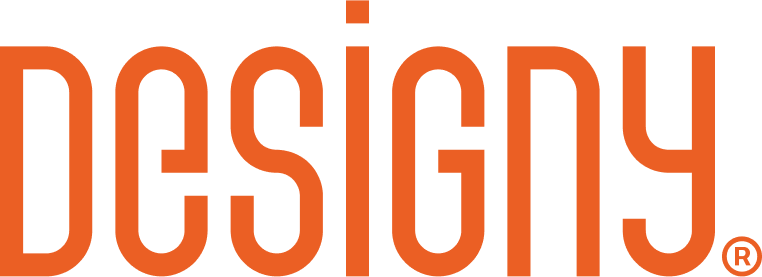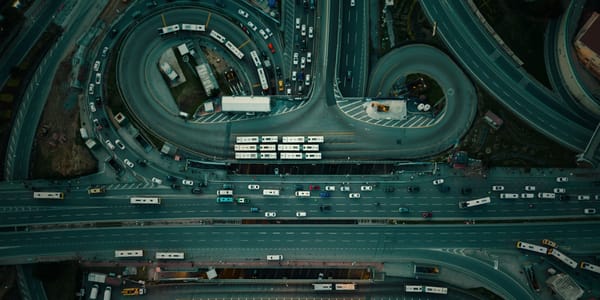“Do we need designers for our internal apps?”
UX design is happening on your product with or without a dedicated designer. So, who's making your product’s UX design decisions?

We live in a strange, new era of product design, and yet it’s the same old story.
If you’ve been around for half a second, you’re aware of the power, awe, fear, and unknown of how AI will shape our lives. Every week there’s a new model, new service, or something else integrated with AI.
The prospect of turning volumes of written history into the ultimate search engine, or even automating creativity puts us into this tug-of-war between using it and turning it off all together. The not so distant future is already obsolete while we’re pondering what to do with it today.
AI is a factor, but the question of needing a designer is not new.
The same old story is not about needing a designer or not. It’s about whether businesses see the value of design.
How do you justify design to those who may be averse to pay for it, but whose product outcomes will actually be improved by including it?
Let’s look at it from the stakeholder perspective for a minute.
Let's say you’re a decision maker building a product team.
As a leader, you’re responsible to be as lean as possible, make the product as functional as possible, and start realizing the business gains as soon as possible.
If these goals aren’t stated overtly like this, then they’re strongly implied.
If you need to build an internal app, productivity app, or B2B tool, you’re under even more pressure to deliver on the lean, functional, and soon dimensions.
So perhaps you ask:
- We can just have engineers create the UI. Why do we need designers?
- Since this is an internal app, can we just train users how to use it?
- Why not use AI to design our app (and probably engineer it, too)?
These are logical questions, but there’s loads of assumptions buried in there.
Assumptions make sense now, but they fall apart later
Sure, adding another role to the team intuitively feels like it’s not lean but bloated, not functional but more complicated, and not soon at all.
Some other assumptions go another level deeper:
- Design is another expense that will cost us $,$$$,$$$
- Design is only about the UI look and feel, so does it matter what a business app looks like—we’re not Apple
- Design comes up with futuristic concepts = we don’t have the time or skills to implement
- Design wants to research and explore = we won’t be able to deliver on time
As with any assumption, there is always some sense of plausibility. However, these assumptions are the dark side of an otherwise bright iceberg which carries much more value under it than what appears on the surface.
Consider there are two factors: Seeing the value of design, and working with a designer who delivers that value.
The primary value of design
Often, the first thing that comes to mind when hearing design is the visual—that aesthetic decoration—likely because the average person only sees the final, finished product.
However, if you have a piece of software destined to perform a function, design becomes a whole approach that’s not only extremely practical but extremely necessary.
Design’s primary value is to reduce the gap between a user’s need and a business’ intended outcome.
Whether it’s software, artwork, or an aircraft carrier, there will always be the bookends of someone having a need and delivering an outcome that improves what they’re doing. Let’s unpack it a bit more.
A user’s need
It’s what the person using your product is looking to do. As an internal app, these needs are part of their job workflow.
A business’ intended outcome
The purpose of the product. The app is being funded to drive a business outcome, so priorities are set by this pursuit.
The gap forms when an entrepreneur identifies a user’s need and sets out to build software to enable them to accomplish that goal.
That user—the person—is as much of a requirement to the system as whether the data is hosted in the cloud or it’s built on a headless UI.
While the software may be the solution, how users intend to interact with it affects countless technical design decisions. Identifying these needs is critical to the future of the product.
You need a value-driven designer
A designer is a bridge between the people that use the software and the business that delivers the value. A designer who is driven to design around value will consider these among many other factors:
Users
- Who are the users?
- What are their workflows?
- What are the conditions they work in?
- What are the questions they're asking of the system, and how do they expect the system to respond?
- What decisions will they make based on their use of the product?
Interface design and flow
- Does the interface enhance the user’s focus or distract from their task?
- Are interactive elements clear as to their function?
- Does the visual design choices enhance usability, readability, and glanceability?
- Are insights answering the right question the user is asking?
- Is there consistency across the experience with data presentation and functionality?
Product quality
- Is the final released product maintaining the consistency as it was designed?
- Are product features intuitively structured to scale, or does each new function become buried and difficult to locate?
- How are the users responding to the functionality and what new features should be considered?
This isn’t an exhaustive checklist (or even a checklist), but the successful products are hyper focused on these concepts. These aren’t passing thoughts, but a continual theme and checkpoint throughout the life of a product. These concepts help shape the design decisions every step of the way.
What happens when you don’t close the gaps through design
When the gap between user need and intended outcome stays vague or is addressed without any strategic thought in an ad hoc manner, the product begins a slow spiral downward into wider and wider gaps.
The lack of focus inevitable leads to:
- More cost
- More inefficiency
- More maintenance
- More training
- More mistakes
- More rework
At the risk of seeming redundant, reducing the gaps early, and continually, through design results in less of the above.
- Less cost
- Less inefficiency
- Less maintenance
- Less training
- Less mistakes
- Less rework
Sometimes the term used is tech debt but I like to think of any shortcut made under the guise of “get it out the door” as product debt.
Once the shadow of product debt takes hold, innovative product strategy decisions become more and more difficult.
So let’s revisit the strategies for our internal app we heard earlier, and see how they play out over time.
Strategy 1: We can just have engineers create the UI. Why do we need designers?
Engineering is the backbone of every product’s existence, however, engineering never defines the reason for a product’s existence. That’s defined by the business, ideally for a strategic reason.
If app requires people to interact with it, then that is a gap which needs to be identified and designed.
Engineers may be able to answer all the design-driven questions listed above on top of architecting and coding the product, but a dedicated designer lives in the space between user and engineering.
Engineers are experts on delivering and transforming data and eliminating defects. By default then, their user experience design decisions will create user flows making it easy for them to keep data delivery straightforward and lower maintenance—all at the unintended cost of user effectiveness. Yet, user effectiveness is a major key to achieving successful business outcomes.
I’ve found engineers excel in their wheelhouse when they are given a user experience vision of how and where to deliver the data to the user. When a designer has a thorough understanding of the user’s needs and produced a design direction, engineers are far more focused on solving the how.
Design and engineering are intertwined partners. Without each other, there is no effective product.
Strategy 2: Since this is an internal app, can we just train users how to use it?
Solving the user gap with user training instead of upfront efficient design decisions is a very expensive strategy.
There are technical domains the average retail consumer would never begin to understand simply by picking up the app. They would require deep training just to do the job.
However, specialists in those domains are already trained to understand the subject matter. That means the product should be conformed to their way of thinking about the subject matter.
A app where users need to be trained to use it implies the user interface does not conform to the way the user thinks about their domain.
If the engineers create a user experience conforming to the way data is structured, then the product forces the user to conform their thinking to the product. This places undue effort, time, and drag on the user. When deployed to the entire user base, a singular frustration is scaled and business productivity is impacted (and help-desk calls!).
Training requires time. Time to create and maintain training materials as well as time for users to internalize how to use counter-intuitive interfaces and flows.
Sure, there may be documentation or reference material supplementing the product. However, explaining how to use the product by way of documentation requires creating and maintaining a second product—the training materials.
Documentation, videos, and every reference material needs to be revised any time a screen is updated or features enhanced. Keeping these current can even need a separate team of creators, or they’re low-quality because the product team creates them side-of-desk.
When training materials become large enough to need management, it takes a chunk out of a team’s velocity. Points that would otherwise be spent on feature-building is spent in documentation. This leads to an aversion to innovation and taking risks with new features.
Designing an app to conform to user needs is the definition of intuitive, and keeps training low or non-existent.
Strategy 3: Why not use AI to design our app (and probably engineer it, too)?
Generative AI for UX is an emerging field (I’m sure I’ll be revising this section over time 😉).
AI capabilities are making great strides where there is already structure and language. Code assist and automation are leading the integration into product development and workflows.
However, as of this writing, generative AI for UX (let alone the creative field) has a long way to go for production readiness and daily design use. While it may speed up the process, it’s lacking of business and user context has it generate very generic screens that don’t consider the sensibilities needed with very niche business rules and user tasks.
An AI-designed app doesn’t consider UX design in a systems thinking way—at least not yet.
UX patterns might make sense in a one-off scenario, but overlapping features aren’t efficiently considered.
There may come a day where AI could potentially replace a designer, but there is a long road ahead. If these AI tools were infallible by that time, the entire product design and development landscape will be different.
Even so, creativity and reasoning are uniquely human characteristics. They may appear limited in breadth, but the process of exploration is a core tenant of the discovery of unexpected solutions. To this point, AI is only as purpose-driven as its inputs make it, and only as creative as its algorithms can replicate from its trained context.
A designer who delivers value is critical
Throw a nickel and you’re likely to find a designer out there who wants to design your product. Want to pay a nickel for a designer? They’re out there, too.
There are always project constraints, but a designer who is driven by the outcome of their design is one who will deliver the strongest solutions.
A value-driven designer is not only honed in on the questions I listed above, but also:
- Ask a lot of questions about user needs and technology constraints
- Deliver multiple design options for a given feature
- Understand their design in part of the product, and not the only part
- Connect design decisions to the product cost
- Have a keen interest in refining features over time
Finding a value-driven designer takes digging a bit deeper than hourly rate. The savings in efficiency and impact on effectiveness is what takes a product team from peddling like a unicycle and cruising like a 10-speed bicycle.
Yes, you do need designers
Think of it this way—a designer is a guide to the future of your product.
- They scout ahead by understanding users and the intended outcomes of the business.
- They map out the terrain by outlining workflows and screen sequences.
- They draft a future vision by creating screen layouts and prototypes.
- They guide and climb the summit with the product team by making fine tuning design decisions during development.
- They’re leading the product team and the product experience to the next level.
Design on purpose and go after the outcomes you want.
Interested in more?
I'll help you explore beyond where you are in your product design journey and strengthen you to move forward.
Here are a few next steps:
- Subscribe for free to Designy and get more articles like these
- Check out how one-on-one UX Product Designer Coaching can help you grow professionally Learn more and set up a free coaching discovery call
- Learn how I can strengthen your product or product team through a project or retainer Let’s have a 30-minute call




